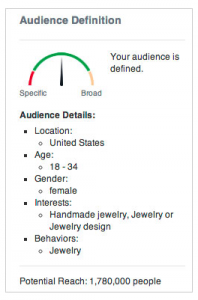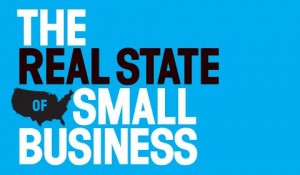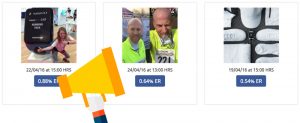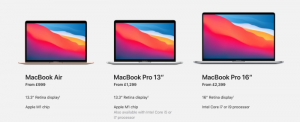SEO becomes Search Entity Optimization. The change from optimization for search engines to search entities has been one of the most powerful, yet unnoticed changes. Search Entity Optimization is synonymous with “semantic SEO” and smart SEO and e-commerce experts have already started using it to their advantage. In this article, I will endeavor to explain how to use semantic SEO principles to improve cross-selling on your e-commerce website. However, before that, let us delve deeper into semantic SEO.
Semantic SEO: Search Results for Ecommerce (An Example)
There is a world of difference between relevant results and meaningful results. The shift in SEO practices from relevance to meaningfulness has been gradual and almost silent. However, very few people seem to have grasped the nuances of semantics.
People are looking for significant results more than ever.
Just the other day, I was looking for printers for a friend. When I googled HP printers, I got many relevant as well as meaningful results:

I clicked on Amazon because of the prices they mentioned in the meta description. Best Buy because they claimed to have a combination of printers and printing supplies, and Staples because there were deals on HP printers.
Here’s Amazon’s page:

Amazon presented the most meaningful of all these results – to me. See how they have neatly categorized printers by type and budget and have an intelligent sidebar with faceted navigation for refining search. They had all kinds of printers as well as printing accessories very neatly cataloged. Now let’s compare these results with Best Buy and Staples.
On Best Buy, “HP Printers” was 7th in the list in the sidebar, and much farther down in the labyrinth of product display that had everything from computers to laptops and tablets. This is a blatant example of disregard of user experience. The least they could do is optimize their landing pages for top performing money queries.

Thankfully, Staples’ landing page showed only printers in the results. Although I’d have appreciated a few Canon or Brother Printers thrown into the mix so I could compare prices and features, I have to acknowledge that I got exactly what I was searching for.
Staples’ landing page is a good example of an upsell-focused sales strategy, as they have nicely highlighted pricier products and displayed them prominently. However, they missed a fantastic opportunity for cross-selling; more about it later.

What It Means
Search engines are all about queries and entities. Looking at the above search results, we can conclude that if you are asking for a particular brand of product, Google will show your other brands in your product category (“printer” in this case) as well. If you want to buy only a particular brand and aren’t interested in others, you may find Google’s results a tad irritating. However, if you are not sure about which brand to go for (which is true in most cases, whether you realize it or not), Google’s semantic search entities might prove to be more meaningful. This is how semantic search helps you make an informed decision with a few clicks.
Understanding Semantics in E-commerce Terms
The most fundamental step in creating a successful e-commerce website is to forget everything you knew about keyword and content and think of only your customer. Know what you’re selling. You know best what peripherals and accessories go well with which product, and how much more revenue you can potentially get by cross-selling them.
You might think that search engines would give you more credibility if you sprinkled your page with a handful of relevant keywords and content pages, but the core Google algorithm will respect you for pre-empting your customer’s needs and displaying products intelligently.
Don’t stuff your page with only a single line of products such as HP printers. Display product lines of all brands and related supplies and accessories on a single page and let the visitor take it from there.
The success of the main e-commerce websites such as Amazon and eBay can be attributed to this strategy. The idea behind this strategy is simple: if your product page displays nothing but a particular product, your customers will either leave the website or make a single purchase and leave.
However, if they will see all related accessories that they might need along with the product (after all that is a printer without ink!) they will end up buying more than they intended, or better yet, realize they needed more than they thought. This is how semantics help creates more opportunities of cross-selling.
You’d do best to use a keyword research tool that does more than just show you terms related to your domain. This will help you prioritize your content creation around variations of those terms. Google Correlate, which is Google Trends in reverse, helps you dig up associations (that Google already sees) between trending terms and any topics or themes that are relevant to your niche.
Semantic SEO 101 for Ecommerce
Before you begin implementing semantic SEO, I recommend a thorough understanding of Hummingbird, predictive search, Google’s Knowledge Graph and other structured language tools like Schema.org and Yandex Structured Data Validator.
Also, use Google Advanced Search, Google Trends, and social media tools like SocialMention to gain insights on semantic keywords. Here, you can see some of the related keywords for HP printers that I got from SocialMention:

Here are five tips to incorporate semantic SEO to promote cross-selling on your e-commerce website:
- The first step towards semantic SEO is interlinking pages within your site. You must, however, interlink pages within your site. To quickly pick some low hanging fruit, start mapping out the category and product pages with high page authority. Then, cross-link high performing (regarding traffic) pages with relevant pages.
- Try split-testing by changing the order of your product display and understand which combination works best.
- Find co-occurring words and LSI keywords for products. For instance, the printer is often accompanied by words like cartridges, print supplies, printer ink, etc. By including these words in the text, you not only create better cross-selling opportunities but also help search engines connect more entities with your website.
- The most fundamental step is to forget everything you know about keywords and content and focus only on your customer. You might think that search engines would give you more credibility if you used variations of a single keyword on a page, but Hummingbird will respect you for pre-empting your customer’s needs and having multiple keywords and products on a single page.
- Include semantic markup in your HTML. Use Schema.org, which will allow entities like products, places or people to be identified in your HTML and to assign these attributes to objects that are being commonly searched for. This will make your web pages gain more SERP real estate and can also affect CTR positively.
Semantics for Landing Page Websites
These days, many new startups with just one flagship product or service are making their online debuts with single-page websites. These are more cost-effective and less time-consuming to create. However, many SEOs, as well as developers vehemently, oppose single-page websites as they are riddled with non-paginated, non-hierarchical information and content structures.
If you want semantically satisfactory single page websites, you need to separate each section by assigning it a different. So your ideal structure looks something like this.
< Header > < Intro/Description > < Section1 > < Section2 > < Footer >
While creating the structure, you need to find suitable keywords for each section and optimize it for that particular section. For instance, if your Section1 is printers, your h1 tag, content, image alt tag, etc. should use all printer-related keywords.
When it comes to internal links, since you don’t have separate URLs, you need to optimize the anchor text as best as you can. Jacob Cass of JustCreative has a helpful trick here, “Use the same DIV ids for the anchor links and use those links on the navigation bar, for optimal result.”
If all this sounds like some technical mumbo-jumbo and you just want to get on with building your site, go for an e-commerce platform with DIY landing page builders that will allow you to create quick websites with separate sections and divisions (with the regular e-commerce features such as payments integrated).
The Takeaway
Understanding and anticipating customer needs and providing for them go a long way to e-commerce success. For years, cross-selling and up-selling techniques have been used in traditional brick-and-mortar as well as e-commerce websites.
However, with Google throwing up new opportunities with more changes to its core search algorithm, you can make good use of entity-related signals to increase the online visibility of your products. And I sincerely hope you get on the bandwagon sooner rather than later!
Which upselling and cross-selling techniques do you use? How do you tweak your content to match your tactics? How is it helping your SEO? Love it if you could share your ideas in the comments below.
Digital & Social Articles on Business 2 Community
(100)










